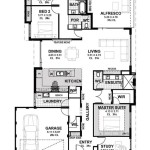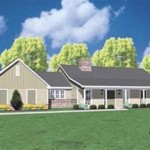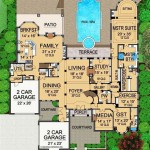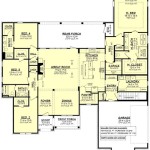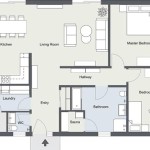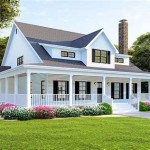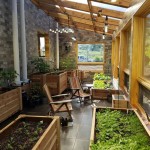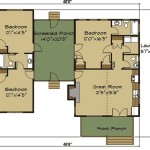Mid-Century Modern Home Plans: A Guide to Iconic Design
Mid-century modern architecture, often referred to as MCM, is a style that flourished from the mid-1930s to the late 1960s. It represents a departure from traditional architectural styles, emphasizing clean lines, open floor plans, and a connection to nature. Mid-century modern homes are characterized by their geometric shapes, large windows, and use of natural materials. While the style originated in the mid-20th century, it continues to be popular today, with many homeowners choosing to build new homes or renovate existing ones in the MCM style.
Key Features of Mid-Century Modern Home Plans
Mid-century modern home plans share several defining characteristics that contribute to their distinctive aesthetic and functionality. These features include:
1. Open Floor Plans
Open floor plans are a hallmark of MCM design. They create a sense of spaciousness and flow, blurring the lines between living areas and eliminating unnecessary walls. The absence of walls allows for natural light to permeate the house, enhancing the sense of openness and connection with the outdoors.
2. Large Windows
Large windows are another essential element of mid-century modern architecture. They bring in natural light, providing a connection with the surrounding environment. The use of expansive windows often extends to sliding glass doors, creating seamless transitions between indoor and outdoor living spaces. These windows are frequently framed in minimalist materials, such as aluminum or steel, further emphasizing the clean lines of the design.
3. Flat Roofs or Low-Pitched Roofs
Mid-century modern homes often feature flat roofs or low-pitched roofs. These roof styles contribute to the sleek, horizontal lines that characterize the MCM aesthetic. While flat roofs are less common in newer construction due to their potential for maintenance issues, low-pitched roofs remain popular as they provide a more modern, minimalist appearance.
4. Geometric Shapes
Geometric shapes, particularly those that are simple and symmetrical, are prominent in mid-century modern home designs. These shapes are evident in the layout of the house, the design of windows and doors, and the use of materials. The use of geometric shapes in MCM houses contributes to the clean, uncluttered look that is so characteristic of the style.
5. Natural Materials
Mid-century modern architecture emphasizes the use of natural materials, particularly wood, stone, and brick. These materials lend a sense of warmth and authenticity to the home, complementing the clean lines and simple forms. The choice of natural materials is also in keeping with the emphasis on connecting with nature that is an important part of the MCM design philosophy.
Advantages of Mid-Century Modern Home Plans
Mid-century modern home plans offer several advantages for homeowners:
1. Modern Aesthetics
The clean lines, open floor plans, and use of natural materials create a timeless and modern aesthetic that is both stylish and functional. MCM homes offer a distinct look that sets them apart from traditional styles while remaining aesthetically pleasing.
2. Energy Efficiency
Mid-century modern designs, with their focus on natural light and open spaces, can contribute to energy efficiency. The use of large windows allows for passive solar heating, reducing the need for artificial light and heating. While newer construction may incorporate modern insulation and energy-saving features, incorporating MCM principles can enhance the overall energy efficiency of a home.
3. Flexibility
The open floor plans of MCM homes offer flexibility and adaptability. The lack of traditional walls allows homeowners to rearrange furniture and adapt the space to their specific needs. This flexibility also makes MCM homes suitable for a variety of lifestyles, from single families to multi-generational households.
Variations of Mid-Century Modern Home Plans
Although Mid-Century Modern architecture has a distinctive look, there are variations within the style. These variations can be influenced by the region, the architect's personal style, and the specific needs of the homeowner. Here are some common variations:
1. Ranch Style
The Ranch style, a popular MCM variation, typically features a single story and a low-pitched roof. Ranch-style homes often have large windows, open floor plans, and a connection to the outdoors through patios or decks.
2. Split-Level
Split-level homes, with their distinct levels and open floor plans, are another common variation. The split-level style offers unique design possibilities, allowing for different living spaces to be arranged on different levels.
3. A-Frame
A-Frame homes, with their distinctive triangular shape, are a more unconventional variation of the MCM style. They offer an interesting architectural feature and a connection to nature due to their connection to the surrounding environment through large windows.
While mid-century modern home plans may be considered a specific style, they offer a framework for building a home that is both beautiful and functional. The flexible and adaptable nature of MCM houses ensures that they can be tailored to meet the needs of a variety of homeowners. Whether you are building a new home or renovating an existing one, mid-century modern plans provide a timeless and stylish solution.

Modern Style House Plan 3 Beds 2 Baths 1731 Sq Ft 895 60 Houseplans Com

Build A House With These Mid Century Modern Floor Plans Blog Eplans Com

Untitled Mid Century Modern House Plans Vintage

Untitled Vintage House Plans Modern Floor Mid Century

Build A House With These Mid Century Modern Floor Plans Blog Eplans Com

Designing A Mid Century Modern Home Part Ii Wildfire Interiors

House Plan 1 Bedrooms 5 Bathrooms 3297 Drummond Plans

Kelso A Modern One Story House Plan With Country Kitchen 5173

Untitled Modern Floor Plans Mid Century House

Custom Florida House Plans Mid Century Mangrove Bay Design Lighting Studio

